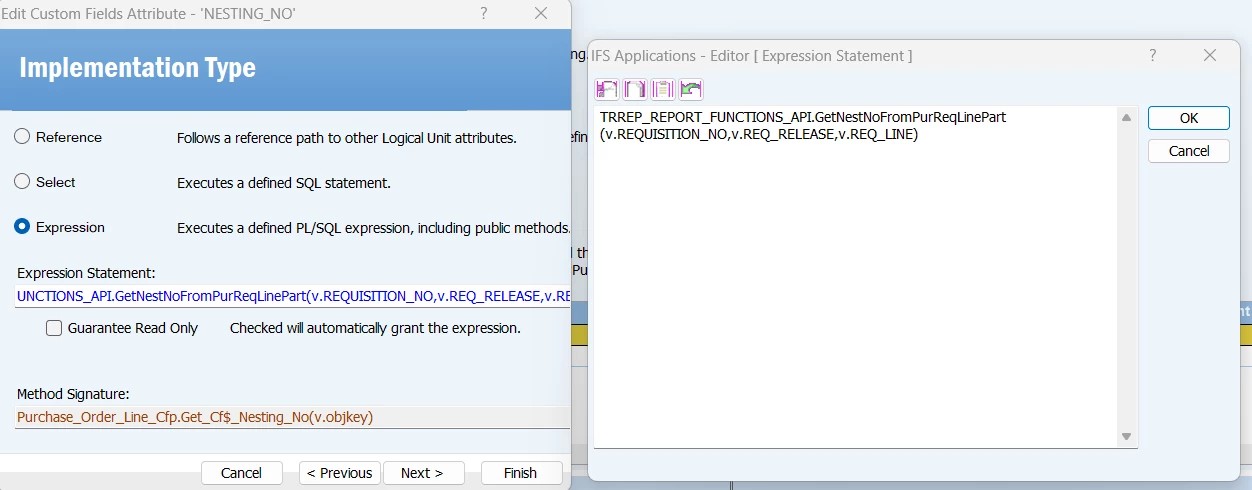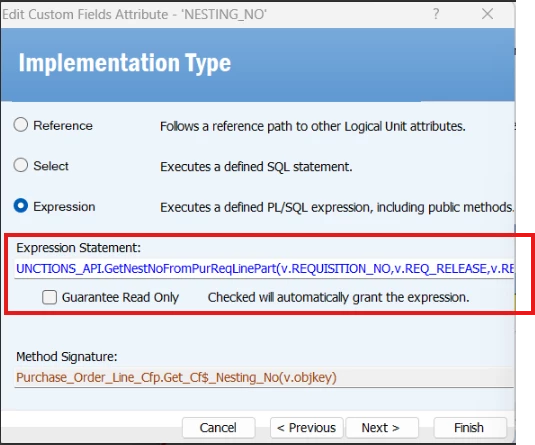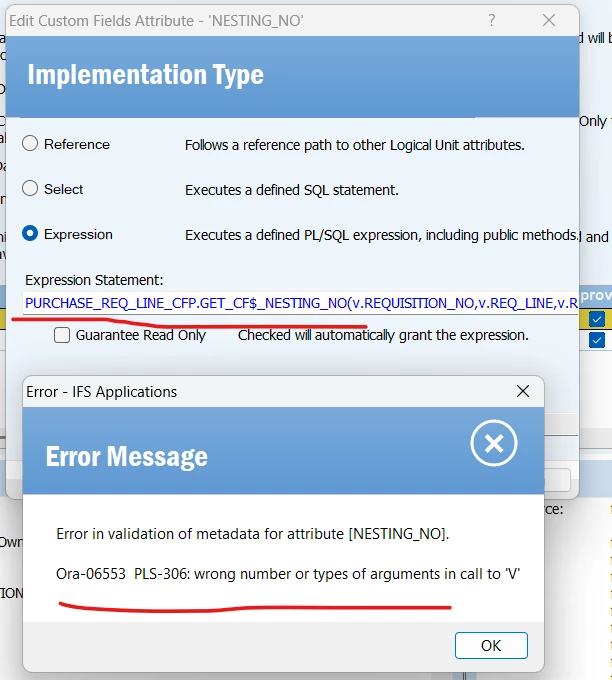I want to add a NESTING_NO column to the Purchase Order Lines table.
The same column already exists in the Purchase Part Requisition Lines table.
If a Purchase Order is created from a Purchase Requisition, the Purchase Order Lines table includes references to the requisition using the REQUISITION_NO, REQ_RELEASE, and REQ_LINE columns.
My goal is to populate the NESTING_NO value in the Purchase Order Lines table based on these referenced values.
To achieve this, I wrote a PL/SQL function and tried to use it in the Expression field while adding a Custom Field.
The function works correctly and returns expected values. However, when I try to add the column using the Custom Field interface, IFS throws the following error:


As a test, I changed the parameters from REQ_RELEASE to RELEASE_NO and from REQ_LINE to LINE_NO, and it worked correctly.
This leads me to believe that the issue is specifically related to the REQ_RELEASE and REQ_LINE columns.
This is the function:
1FUNCTION GetNestNoFromPurReqLinePart(reqNo IN VARCHAR2,relNo IN VARCHAR2, lineNo IN VARCHAR2) RETURN VARCHAR22 IS3 v_nesting_no VARCHAR2(100);4BEGIN5 SELECT CF$_NESTING_NO6 INTO v_nesting_no7 FROM PURCHASE_REQ_LINE_PART_CFV8 WHERE REQUISITION_NO = reqNo and RELEASE_NO = relNo and LINE_NO = lineNo;9 RETURN v_nesting_no;1011EXCEPTION12 WHEN NO_DATA_FOUND THEN13 RETURN NULL;14 WHEN TOO_MANY_ROWS THEN15 RETURN 'ERROR: TOO MANY ROWS';16 WHEN OTHERS THEN17 RETURN 'ERROR: ' || SQLERRM;18END GetNestNoFromPurReqLinePart;






